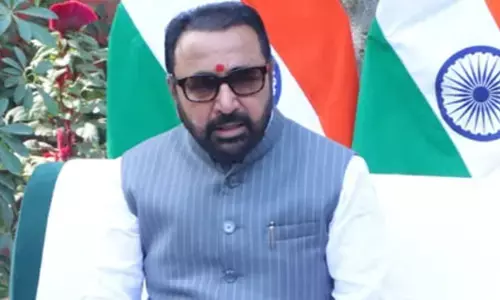Rising consumption of processed, packaged food in India to affect health outcomes
Share :

The rising consumption of processed and packaged food in India will likely affect health outcomes and policies may be required to regulate the nutritional content of these foods and promote healthier alternatives, a government paper has stressed.
New Delhi : The rising consumption of processed and packaged food in India will likely affect health outcomes and policies may be required to regulate the nutritional content of these foods and promote healthier alternatives, a government paper has stressed.
According to the paper, titled ‘Changes in India’s Food Consumption and Policy Implications,’ by the Economic Advisory Council (EAC) to the Prime Minister, across regions and consumption classes, “we observe a significant increase in the share of household expenditure on served and packaged processed food”.
This increase was universal across the classes but more pronounced for the country's top 20 per cent of households and significantly more in urban areas.
“While food processing is a growth sector and a significant creator of jobs, this rising consumption of processed and packaged food will also likely affect health outcomes,” the paper warned.
The Indian food and beverage packaging industry is experiencing substantial growth, with market size projected to increase from $33.73 billion in 2023 to $46.25 billion by 2028, driven by factors like rising consumption.
According to the paper, further research is needed to understand the nutritional implications of the growing consumption of packaged processed foods and policies may be required to regulate the nutritional content of these foods and promote healthier alternatives.
The paper also analysed the relationship between nutritional intake and dietary diversity on the prevalence of Anaemia.
“As expected, we found that average Iron intake was inversely related to the prevalence of Anaemia; however, we discovered a significant negative relationship between the prevalence of Anaemia and dietary diversity in sources of iron,” it noted.
This strong inverse relationship was observed across state/UTs.
The analysis revealed that policies that aim to reduce anaemia among children and women would need to focus on improving iron intake and, more importantly, consider the dietary diversity of iron sources.
The report, however, acknowledged the limitations of excluding served and packaged processed food from the micronutrient analysis.
“A separate study on this aspect is recommended due to its potential health implications. Further research could explore the relationship between dietary diversity and other health outcomes,” read the paper.
The paper also observed a significant decline in the consumption of cereals in terms of cooked food by approximately 20 per cent, and this would be reflected in the average daily intake of micronutrients, because cereals are an essential dietary source for many micronutrients, such as Iron and Zinc.














